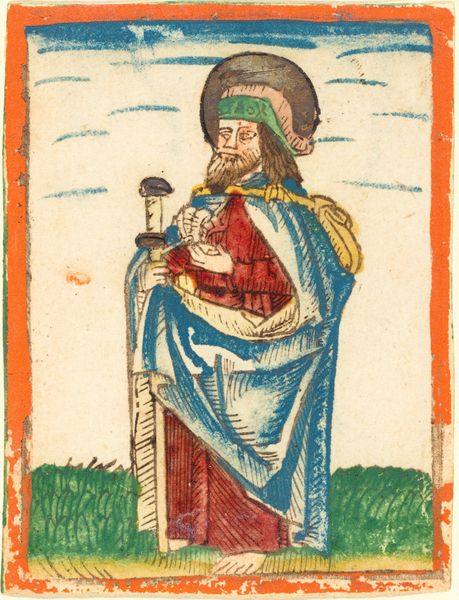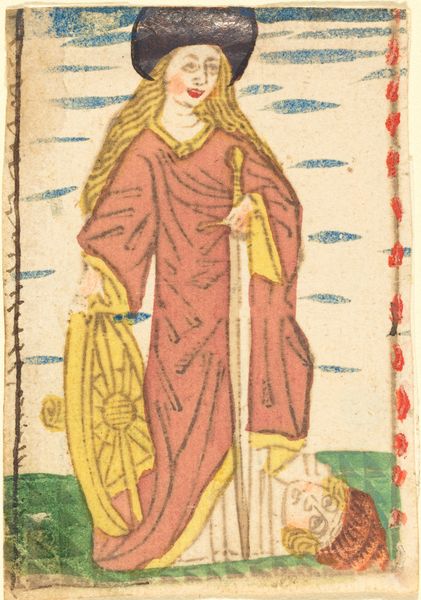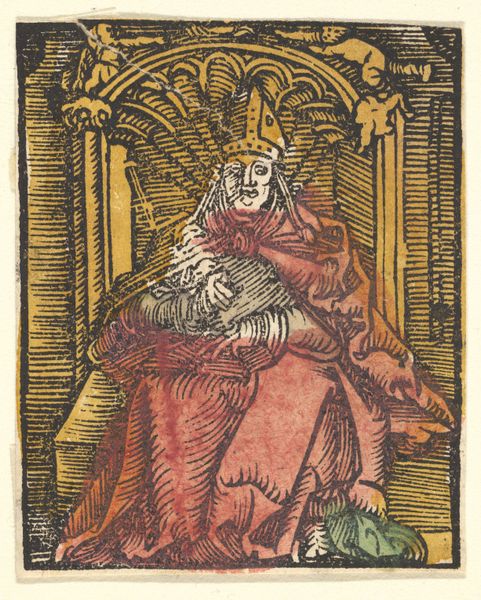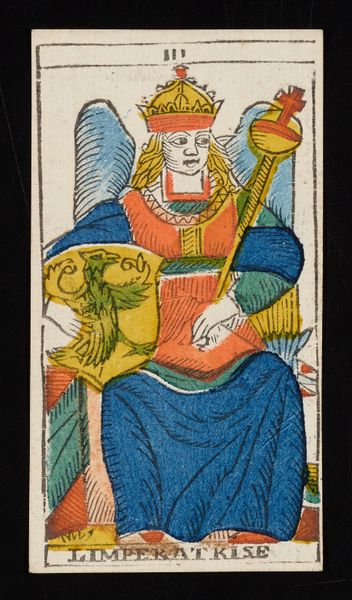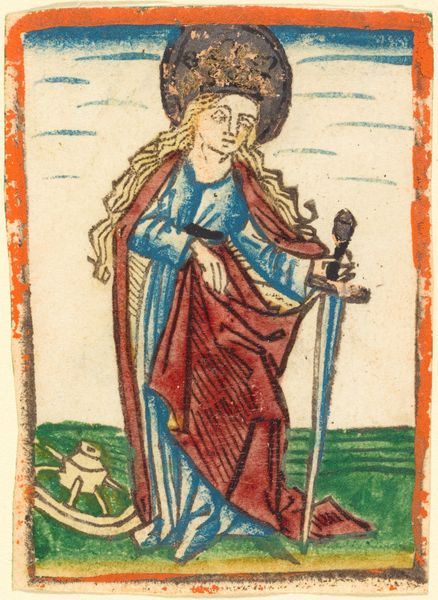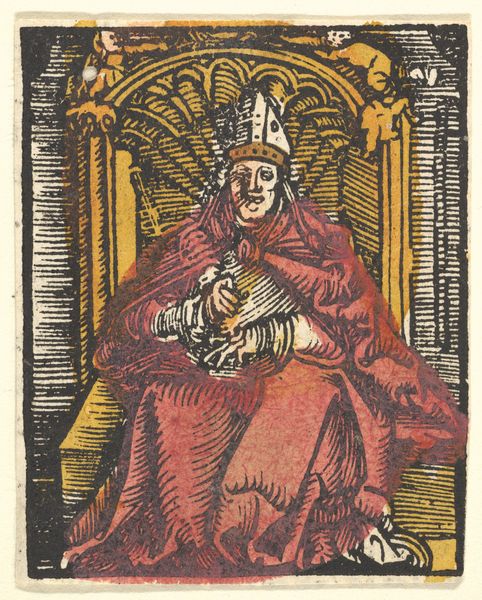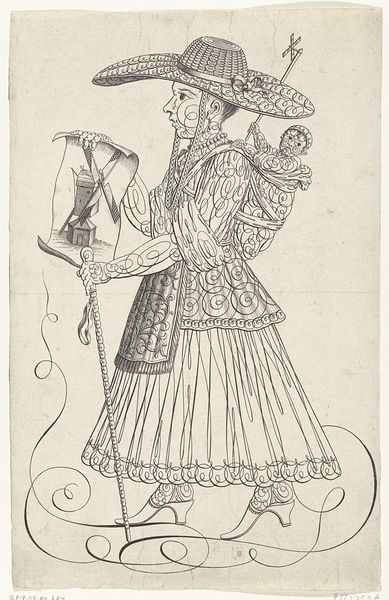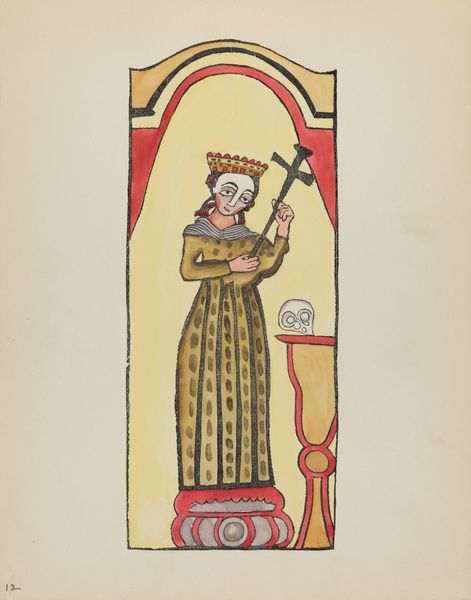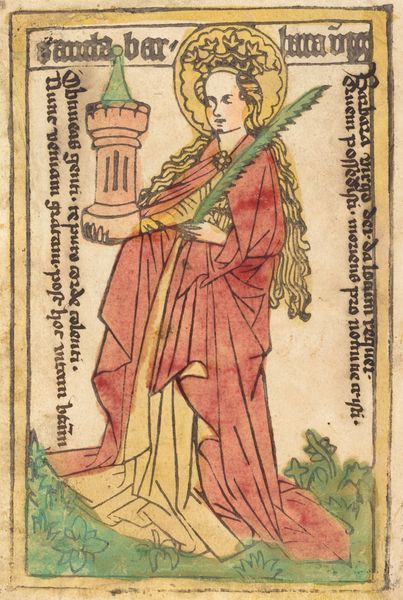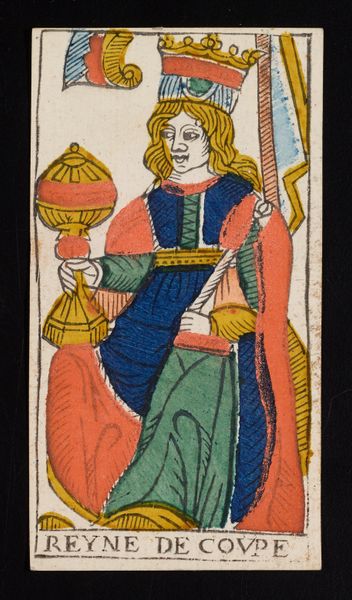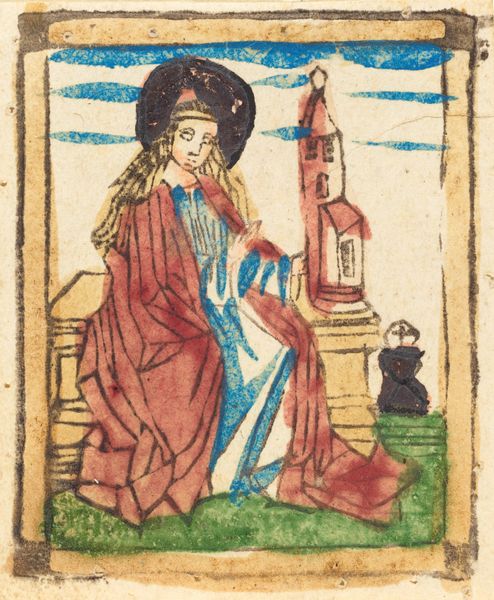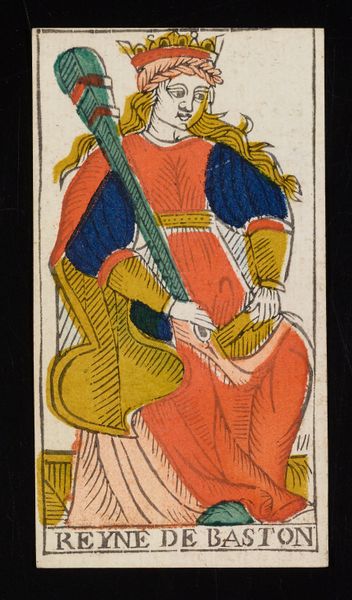
tempera, print
#
portrait
#
medieval
#
tempera
# print
#
figuration
#
history-painting
#
northern-renaissance
#
miniature
Copyright: National Gallery of Art: CC0 1.0
Curator: Let's consider this painted print, believed to represent Saint Conrad of Constance, dating back to the late 15th century. The image presents a bishop holding a crozier and chalice. Editor: The initial feeling I get is one of deliberate austerity, surprisingly earthy in tone for a religious icon. You can almost smell the tempera. It also strikes me that the saint seems almost… modern. Curator: Indeed. Notice the meticulous detailing on the bishop's garments, the way the artist used simple strokes of tempera paint to evoke richness, especially the careful depictions of the chalice. But let's look at its symbolism; the crozier signifies his authority as bishop, the chalice alludes to the Eucharist. The animal on top looks like a small toad or newt. Editor: A striking combination of symbols. The presence of what looks like a newt nestled atop the chalice complicates the narrative considerably. We know tempera offered its own limits as a medium. The layering is precise. What would motivate the selection of these colors and objects to build meaning, especially given its origin in a printmaking context, makes me wonder about the socio-economic accessibility of these artworks in the North. Curator: The newt is unusual, although not totally unheard of. Newts sometimes were associated with alchemy and even seen as symbols of transformation, alluding to Conrad's spiritual journey and ability to bring transformation. I'd even argue that we can see the roots of later Northern Renaissance portraiture here, with the humanism of the face contrasting to these powerful spiritual symbols of office and holiness. Editor: Right. And there's a clear relationship here, too, between production, craft, labor and value. Curator: Yes, these early prints served to disseminate iconography to a broader audience, so it is no wonder to consider his hagiography as being rooted in the history and spirituality of its context, but crafted using print and paint processes to further reinforce the message for the culture from whence it came. Editor: For me, seeing these distinct material practices interwoven, allows a tangible bridge that helpfully deconstructs the social, economic, and spiritual role these images embodied. Curator: Indeed. There is a complex dialogue taking place between craft, symbol, and the story being told here. Editor: An apt conclusion, reminding us that even seemingly simple works can hold layered depths when considered through multiple lenses.
Comments
No comments
Be the first to comment and join the conversation on the ultimate creative platform.
